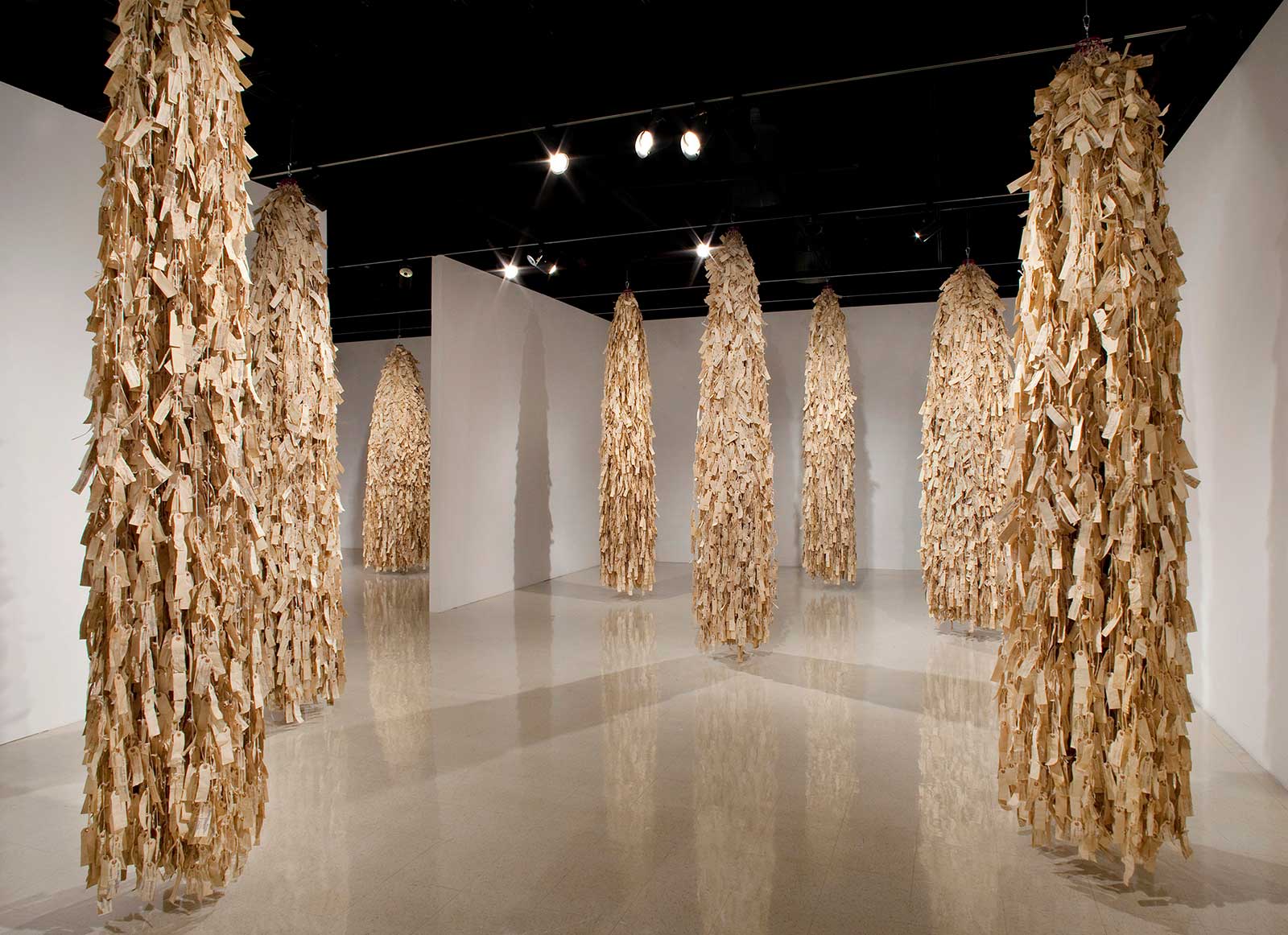New Exhibition Opens in Topeka, KS
By Margaret A. Keough

New from ExhibitsUSA, Resilience—A Sansei Sense of Legacy Opens March 11, 2022
In 1942, in response to the bombing of Pearl Harbor by Japanese forces, President Franklin D. Roosevelt signed into law Executive Order 9066. The law ordered the forced imprisonment of all Japanese Americans living on the west coast of the United States, which has the second largest population of Japanese people living outside of Japan.
In the years following the order’s retraction at the end of WWII, expatriate Japanese families and individuals were forced to come to terms with lost property, the shame and indignation of incarceration, and the task of re-integration into a society that had expelled them. After their release from the incarceration camps that dotted the American West and Midwest during the war, Japanese Americans used the phrase Shikata ga nai—it cannot be helped—and the word gaman—to persevere and stay silent—to speak to their resilience against the losses they incurred at the behest of Roosevelt’s order.
Told from the point of view of Sansei (third generation) Japanese Americans, Resilience—A Sansei Sense of Legacy is an exhibition of eight artists whose work reflects on the effect of EO9066 as it resonated from generation to generation. Resilience begins its tour at Alice C. Sabatini Art Gallery in Topeka, Kansas, on Friday, March 11. Exhibition artists are: Kristine Aono, Reiko Fujii, Wendy Maruyama, Lydia Nakashima Degarrod, Tom Nakashima, Roger Shimomura, Na Omi Judy Shintani, and Jerry Takigawa.
While several of the artists in Resilience employ traditional Japanese methods in the construction of their work—Lydia Nakashima Degarrod’s use of boro stitching on her works on paper; Na Omi Judy Shintani’s kimono cutouts honored in ceramic vessels—others use iconography relating to Japanese culture as a jumping-off point for personal explorations on the subject of the incarceration camps—Reiko Fujii’s photographs-as-kimono; Wendy Maruyama’s columns of replicated camp ID tags. Each in their own way, the artists in this exhibition express moments of deeply felt pain and reluctant acceptance, emotions which were often withheld by their elders.
(Pictured: Wendy Maruyama, The Tag Project from the series Executive Order 9066, 2011; paper, ink, string, thread, 120 x 24 x 24 inches per column; Courtesy of the artist)


